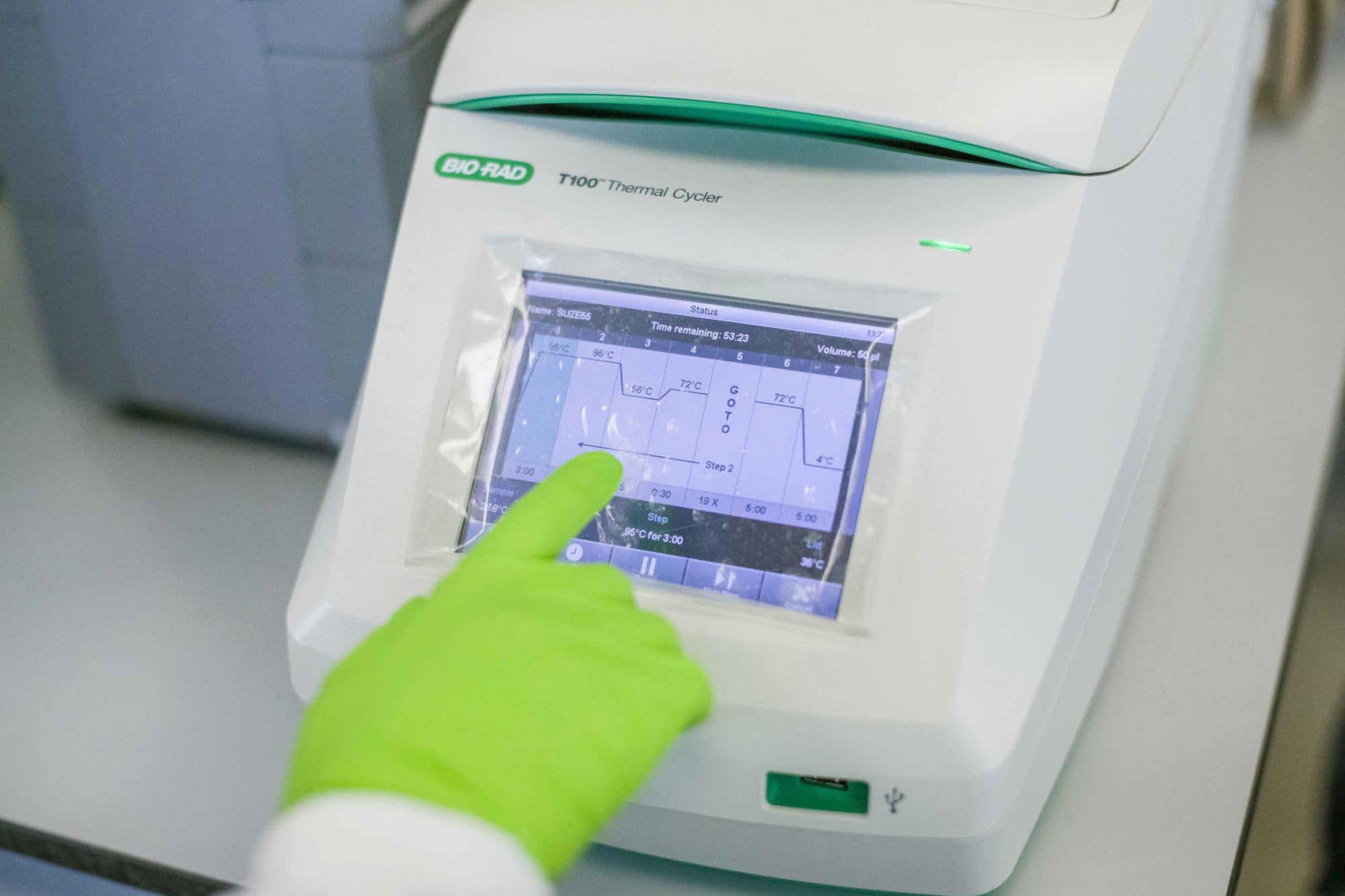
Therapy development updates
There are many ongoing clinical and laboratory studies around the world, exploring innovative approaches to treating inherited sight loss. Here’s a snapshot of a few recent news stories:
Repurposing chemotherapy
Biotechnology company Aldeyra has announced that its drug ADX-2191 met the primary goal of safety in a small clinical trial in retinitis pigmentosa (RP), and led to some improvements in trial participants’ retinal function. ADX-2191 is based on the chemotherapy drug methotrexate and has been formulated for injection into the eye.
The results come from just eight participants, all of whom had genetic mutations that caused faulty rhodopsin, a protein key to visual function. Aldeyra believes preclinical evidence points to methotrexate potentially helping facilitate the clearance of mutated rhodopsin. The trial took place over the relatively short period of three months, during which participants received regular injections once or twice a month.
Aldeyra reported no safety concerns, with injection site pain being mild or moderate. The company now intends to discuss a potentially pivotal Phase 2/3 trial with regulatory authorities in the USA. The next trial would collect enough data to more clearly demonstrate any beneficial effect.
A new gene therapy company
Retina UK grantee Professor Robert MacLaren has been central to the launch of a new ophthalmic gene therapy company, Beacon Therapeutics. The company aims to initiate clinical trials of a gene therapy, developed by Professor MacLaren, which targets cone-rod dystrophy caused by the CDHR1 gene.
Beacon Therapeutics has also acquired the X-linked RP and achromatopsia gene therapies previously pioneered by AGTC. These are further along the development pathway, with the X-linked RP therapy (for the RPGR gene) at phase 2/3 clinical trials, and the achromatopsia therapy at phase 1/2. These are not to be confused with the X-linked RP and achromatopsia gene therapies being trialled by the Janssen Pharmaceuticals – MeiraGTx partnership.
Boosting healthy gene activity
Australian company PYC Therapeutics is exploring a new approach to genetic therapy, by linking molecules called antisense oligonucleotides (AONs) to special protein-type structures that aid the AON’s entry into cells. The AONs are precisely designed to place a molecular “patch” over certain strands of genetic code, either to cover over harmful code or manipulate the way a gene is used. The technology could eventually be applied to various types of disease.
PYC Therapeutics has now started its first clinical trial, testing a therapy for autosomal dominant RP caused by a faulty PRPF31 gene (also known as RP11). In this type of RP, retinal cells are able to produce some healthy PRPF31 protein, but not enough of it to exert the required effect. The AON used in this therapy dampens the activity of a particular genetic “off-switch”, thereby boosting production of healthy PRPF31 and supporting retinal cell survival. So far, only a few people have received the therapy, with the main aim of the current trial being to establish safety.
Enhancing stress resilience
Working at an earlier stage of therapy development, researchers at the University of California have discovered a new class of drug that could play a role in slowing retinal degeneration, particularly in its earliest stages. Described as stress resilience-resilience-enhancing drugs, or SREDs, these molecules can potentially boost the retina’s ability to withstand the damaging knock-on effects of any faulty gene, preserving function for longer. It will be a while before SREDs can be tested in people, but this kind of approach could one day be used either on its own or in tandem with other treatments such as gene therapy.
ProQR – Théa agreement fails
The planned handover of ProQR’s potential therapies for Usher syndrome and Leber congenital amaurosis to Laboratoires Théa will unfortunately no longer go ahead. The agreement was reliant on a number of ProQR staff moving over to Théa, and some of these individuals have decided against making the move. This means that the continued development of the two treatments is uncertain, although ProQR will remain on the lookout for alternative partnership opportunities. For more information, see the news section of our website.
You can keep up to date with further developments via our e-news, Look Forward newsletter, website, webinars and podcasts.
Join the Retina UK Lived Experience Panel to hear about opportunities to take part in research-related activities. Visit RetinaUK.org.uk/lived-experience or call the office on 01280 821334.
